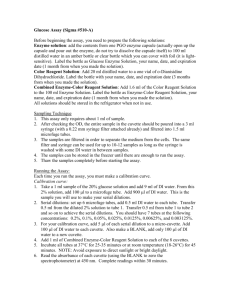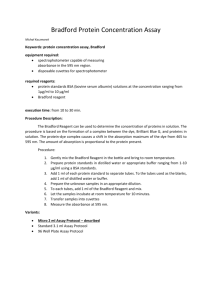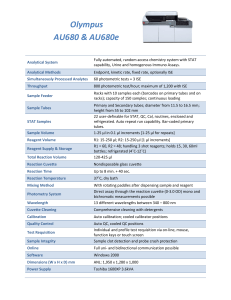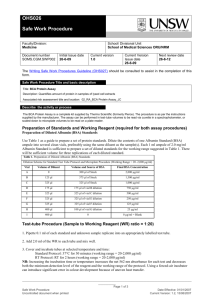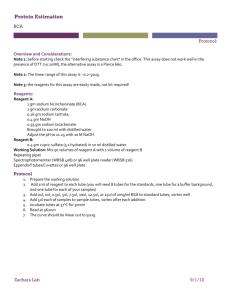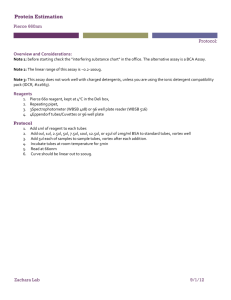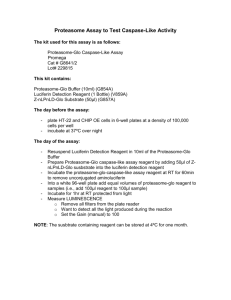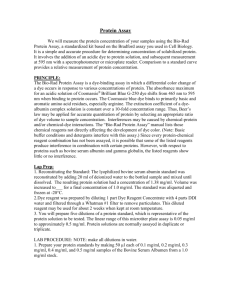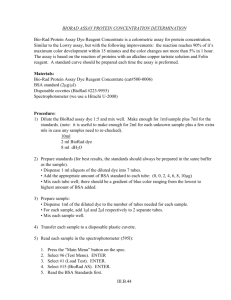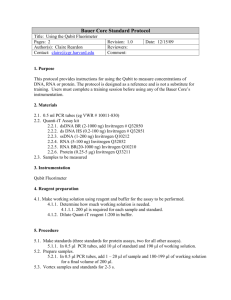Ethanol Assay
advertisement
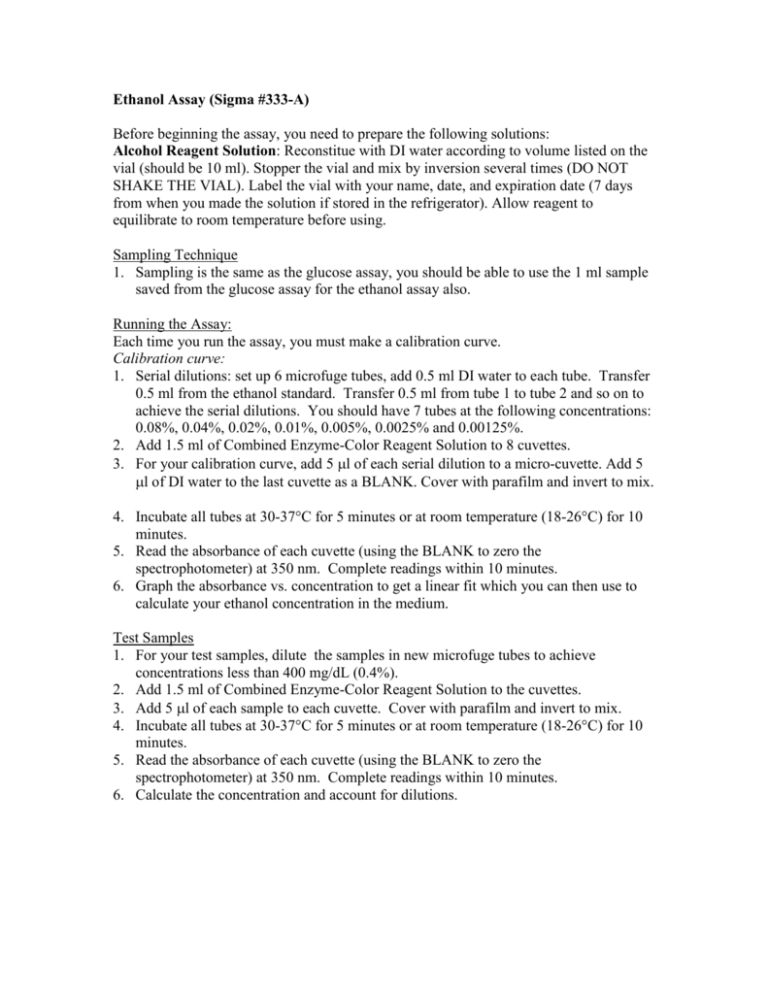
Ethanol Assay (Sigma #333-A) Before beginning the assay, you need to prepare the following solutions: Alcohol Reagent Solution: Reconstitue with DI water according to volume listed on the vial (should be 10 ml). Stopper the vial and mix by inversion several times (DO NOT SHAKE THE VIAL). Label the vial with your name, date, and expiration date (7 days from when you made the solution if stored in the refrigerator). Allow reagent to equilibrate to room temperature before using. Sampling Technique 1. Sampling is the same as the glucose assay, you should be able to use the 1 ml sample saved from the glucose assay for the ethanol assay also. Running the Assay: Each time you run the assay, you must make a calibration curve. Calibration curve: 1. Serial dilutions: set up 6 microfuge tubes, add 0.5 ml DI water to each tube. Transfer 0.5 ml from the ethanol standard. Transfer 0.5 ml from tube 1 to tube 2 and so on to achieve the serial dilutions. You should have 7 tubes at the following concentrations: 0.08%, 0.04%, 0.02%, 0.01%, 0.005%, 0.0025% and 0.00125%. 2. Add 1.5 ml of Combined Enzyme-Color Reagent Solution to 8 cuvettes. 3. For your calibration curve, add 5 l of each serial dilution to a micro-cuvette. Add 5 l of DI water to the last cuvette as a BLANK. Cover with parafilm and invert to mix. 4. Incubate all tubes at 30-37°C for 5 minutes or at room temperature (18-26°C) for 10 minutes. 5. Read the absorbance of each cuvette (using the BLANK to zero the spectrophotometer) at 350 nm. Complete readings within 10 minutes. 6. Graph the absorbance vs. concentration to get a linear fit which you can then use to calculate your ethanol concentration in the medium. Test Samples 1. For your test samples, dilute the samples in new microfuge tubes to achieve concentrations less than 400 mg/dL (0.4%). 2. Add 1.5 ml of Combined Enzyme-Color Reagent Solution to the cuvettes. 3. Add 5 l of each sample to each cuvette. Cover with parafilm and invert to mix. 4. Incubate all tubes at 30-37°C for 5 minutes or at room temperature (18-26°C) for 10 minutes. 5. Read the absorbance of each cuvette (using the BLANK to zero the spectrophotometer) at 350 nm. Complete readings within 10 minutes. 6. Calculate the concentration and account for dilutions.
